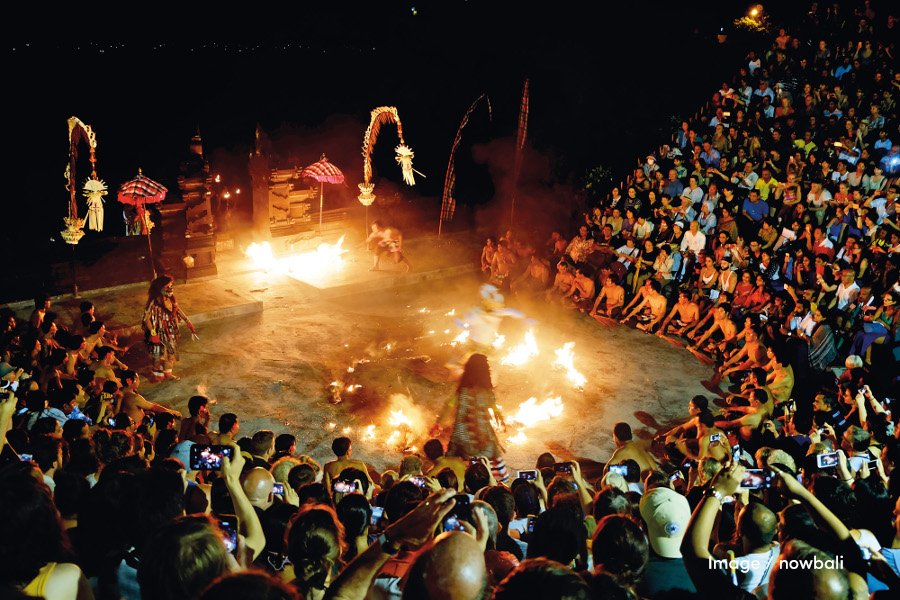Kecak Dance
Kecak Dance is one of Bali’s most iconic traditional performances, deeply embedded in the island’s cultural and spiritual heritage. Unlike most traditional Balinese dances that are accompanied by gamelan orchestras, Kecak is performed with the powerful chorus of male voices. The rhythmic chants of “cak, cak, cak” by dozens or even hundreds of men sitting in a circle create a hypnotic and magical atmosphere, making this dance stand out as a unique art form in the world.
Origins and History
Kecak Dance was first developed in the 1930s in Bali. Its roots can be traced back to the Sanghyang ritual, a sacred ceremony aimed at warding off evil spirits and restoring spiritual balance in the community. Over time, this ritual was combined with the epic story of the Ramayana, focusing on the dramatic battle between Rama, Sita, Ravana, and the legendary monkey god Hanuman.
A German artist named Walter Spies played an important role in shaping Kecak into a performing art accessible to tourists. By involving hundreds of male dancers who chant in unison, he helped transform this ritual into a theatrical spectacle that captivates both local and international audiences.
Distinctive Features of the Performance
-
No Musical Instruments
The dance relies solely on human voices as its orchestra. The chorus of “cak, cak, cak” chanted rhythmically by the dancers builds tension and atmosphere throughout the performance. -
Ramayana Narrative
The dance dramatizes scenes from the Ramayana, particularly Rama’s quest to rescue Sita from the demon king Ravana. One of the most spectacular moments is when Hanuman sets fire to Ravana’s palace, often performed with real flames on stage. -
Theatrical Movements
Rather than complex choreography, Kecak emphasizes expressive gestures and dramatic storytelling, allowing the audience to focus on the narrative and spiritual ambiance.
Meaning and Philosophy
Kecak is more than just entertainment—it carries deep spiritual meaning. The collective chanting represents unity, prayer, and cosmic energy. The Ramayana story conveys moral values of courage, loyalty, and the eternal triumph of good over evil.
Cultural and Tourism Appeal
Today, Kecak Dance is one of the most popular cultural attractions in Bali. Performances are often held at iconic venues such as Uluwatu Temple, where the dance is staged against the backdrop of a stunning sunset, creating an unforgettable cultural and visual experience.
Kecak not only enriches Indonesia’s performing arts but also stands as a symbol of Bali’s unique cultural identity recognized around the world.



0 Comment